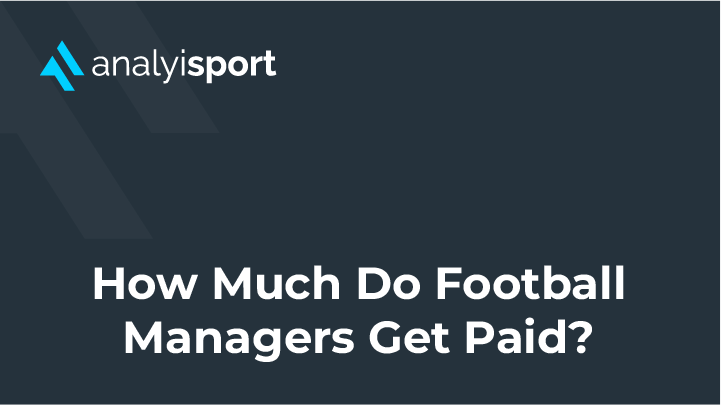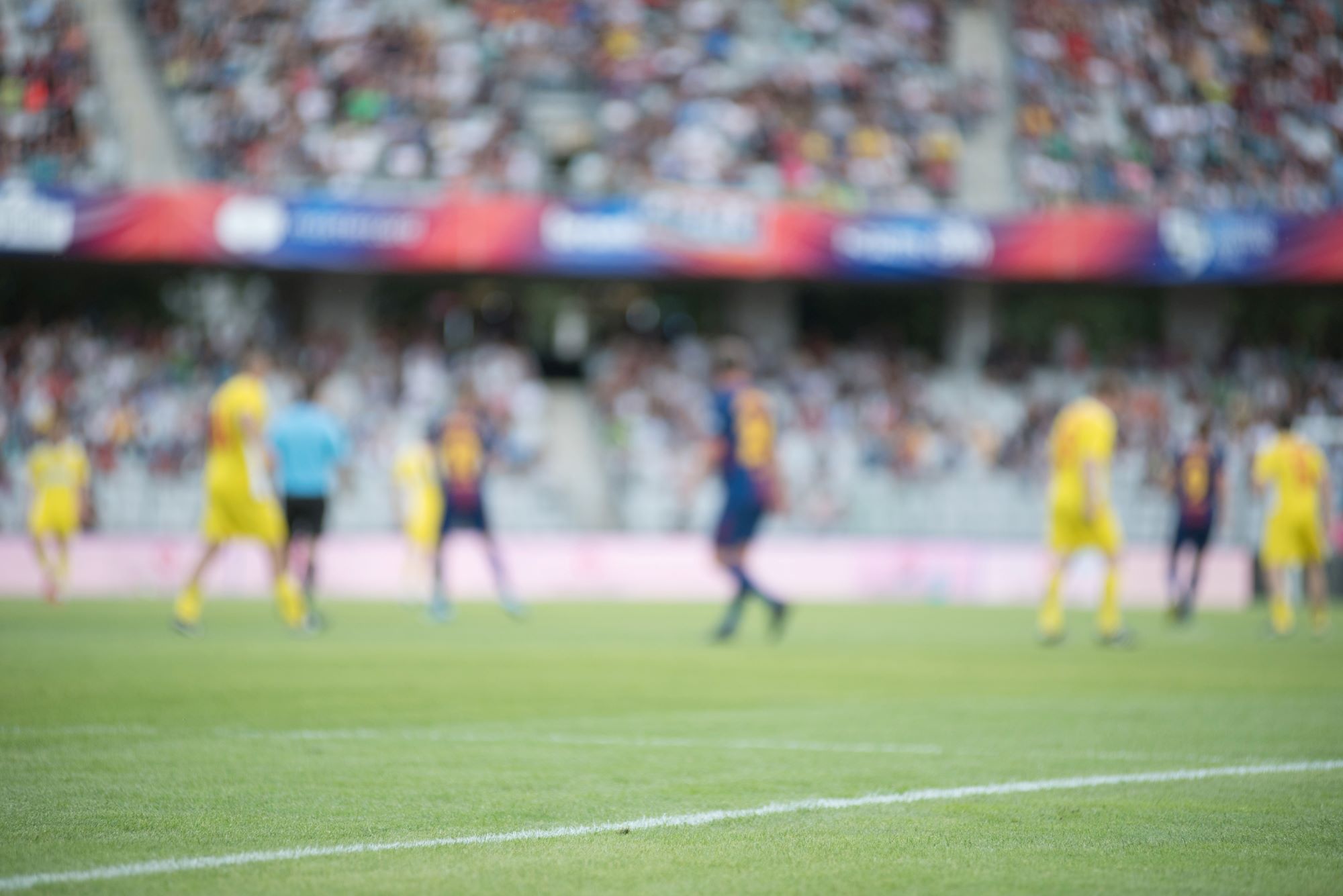How Does The Premier League Collect Data?
There is a huge amount of data recorded in modern football, millions of data points for each match, detailing each touch of the ball and every movement the players make. The Premier League is one of the leaders in data. Just as it’s one of the most watched leagues around the world, it’s also one of the leagues in which the most data is collected.
Several different companies record and provide data on the Premier League, information about the performances of players and teams, but did you know that the Premier League also collects its own official performance data?
The Premier League’s official data partner is Opta, who are part of Stats Perform.
Data from live matches is collected by Opta with the help of a three-person analysis team. Two of the analysts watch video footage of the match and record information about each touch of the ball, which players were involved, and where on the pitch it happened. The third analyst provides quality control, rewinding the video footage and making sure that each piece of information recorded is correct. This live-match data is then checked again post-match to ensure that it really is 100% correct.
The data that Opta collects includes the basics, such as goals and assists, but also information about other events such as touches, clearances, and big chances missed. Some of these stats are harder to measure than others. How do you decide what counts as a big chance? To solve this, Opta provides their analysts with definitions so they can be consistent across the course of the season in the way they record the data.
Partnership with Oracle
The Premier League also has a partnership with Oracle, the world’s third largest software company. Oracle provides the Premier League with advanced analytics during live broadcasts. These models include ‘Average Formation,’ which looks at how each team sets-up in and out of possession, ‘Live Win Probability,’ a model which simulates the match over 100,000 times to calculate a team’s chances of winning or drawing, and ‘Momentum Tracker,’ which measures how likely it is that the team in possession will score in the next 10 seconds.
These are models that are more complicated than basic stats and can’t simply be recorded by people watching video footage. Instead, Oracle uses machine learning to interpret data and make it meaningful.
The Premier League’s deals with Opta and Oracle are aimed at being able to provide interesting and entertaining statistics to fans and broadcasters. As the Premier League announced when revealing their new deal with Oracle, “Research shows that fans are interested in the integration of match data and analysis, and these insights will help tell even more stories about the Premier League matches, providing fans a data-rich experience.”
Opta and Oracle aren’t the only companies that collect Premier League statistics. Other companies that record data in the Premier League include Wyscout and StatsBomb. These aren’t official partners of the Premier League, but the data they record in the Premier League, and in other competitions around the world, is extensive. Like Oracle, they’ve developed metrics that allow them to calculate complex stats such as Expected Goals (xG) and Expected Assists (xA).
Instead of providing their data to the Premier League, these companies sell the performance data to football clubs and other companies and individuals who are interested in the data. These include Premier League clubs. Earlier this year, StatsBomb announced a new deal with Newcastle United. They also have deals with Wolverhampton Wanderers and Everton. Many clubs, including Arsenal and Manchester United, have used WyScout, especially to help them with player recruitment. Although they’re not official partners of the Premier League, they still have a big impact in the league.
Where Can I Get The Data?
The official Premier League data provided by Opta can be found on the Premier League’s own website.
The website is designed in a way that makes it easy to look through the data. There are separate sections for player stats and club stats. It’s also possible to search through the all-time data, allowing to see who’s performed the best in various categories since the Premier League began in 1992 (although for some data sets the statistics only go back as far as the 2006/07 season). The website also features tools that allow you to make comparisons between two players of your choice or to look at the head-to-head stats between any two teams.
Both StatsBomb and WyScout collect detailed Premier League data. However, if you want to access their data directly, you’ll need a subscription. They’re companies that make their money from collecting and selling the data to clubs and professionals.
If you want data that’s more detailed than what’s available on the Premier League website, and you want it for free, then the best option is FBref. It was launched in 2018 and has quickly become one of the go-to places for anyone interested in football data.
Like the Premier League’s own website, the data on FBref goes back to the 1992/93 season when the Premier League began. As you’d expect, the number of statistics recorded increases as the seasons go by. The website includes very detailed event data, allowing you to look in depth at areas such as how well teams and players pass the ball, or how well they defend, or attack. For recent seasons, it includes metrics such as Expected Goals and Expected Assists.
The data is presented in spreadsheets. It’s perhaps not the most attractive to look at, but it does make it very easy to search through to find the information you need. If you want to find out who’s performed the best at each stat, simply click on the name of the stat at the top of the spreadsheet and it will reorder the spreadsheet with the best performers at the top. It’s a quick and easy way to answer questions you might have about how players have been performing, such as which defenders have been making the most clearances or which goalkeeper has the highest average length of goal-kick.

When The Premier League Started Collecting The Data
During the first season of the Premier League, back in 1992/93, only very minimal statistics were recorded for matches. This included stats such as who scored, who provided the assist, and who received yellow and red cards. It was not exactly data that anyone could use for detailed performance analysis. But neither clubs nor broadcasters were interested in that kind of detailed analysis back then.
Things started to change in 1997/98, when Opta became the Premier League’s official player performance statisticians. The company had only been formed the year before, quickly going into partnership with Sky Sports and making a name for themselves as part of Sky’s TV coverage of the Premier League.
At first, the stats stayed relatively simple, but from 2006/07 Opta began to collect a lot of additional stats. For players, these included stats such as key passes, tackle success, shooting accuracy. For teams, these included stats such as passes per match, errors leading to a goal, and goals from counter attacks.
Since 2021/22 the Premier League has also worked with Oracle, who provide advanced metrics, such as their ‘Momentum Tracker.’ This reflects the fact that data in football, while still using lots of event data of the type collected by Opta, is now much more sophisticated, using complex metrics and models to quantify different parts of the game and make the data more insightful.
Although the Premier League has had an official partnership with Opta since 1997, it’s taken clubs time to start to use data themselves.
One of the early pioneers were Bolton Wanderers. Under the management of Sam Allardyce, who had seen the potential of using data in sport during his time as a player in the USA, the Lancashire club started to use data to improve their performance levels. With a smaller budget than many other clubs in the division, they used data to play more efficiently, identifying key goal scoring opportunities and focusing their resources on making the most of them.
Allardyce created what he called the ‘War Room,’ an office in which he and his coaches analysed data on a big screen and used it to plan their strategy.
Other clubs began to use data too, but it wasn’t until the takeover of Liverpool by the Fenway Sports Group in 2010 that a Premier League club really began to invest heavily in data. The new owners had been involved in baseball, owning the Boston Red Sox. They’d seen the success that data analysis could bring in American sport, and wanted to emulate it in the Premier League.
Since 2010, data departments have grown and become a key part of the modern Premier League club. From recruitment to tactics, the insights they generate from the data are having a significant impact throughout the game.
Who Has The Best Stats In The Premier League?
The amount of Premier League data has massively increased in recent years. As well as traditional stats about the number of goals scored, or assists made, complex models and metrics help to record everything that happens on the pitch. From pass completion rates to Expected Goals, so much information is available.
If you’re looking for stats about teams and players in the Premier League, there are multiple places you can look. But where is the best place to go?
Ultimately, it depends on what kind of stats you want and what you need them for.
If you require basic stats, to see who’s scoring lots up front, or winning a lot of headers in defence, then the Premier League’s own website is the place to go. It also has a feature that allows you to compare the stats of two players. This kind of data is great if you’re looking to decide who to put in your Fantasy Premier League team, want to know a bit more about who’s performing well for the team you support, or want to know who to watch out for in an upcoming match.
If you’re starting to get into analysis and want enough data to look closely at the performances of a team or a player, then the best place for free, detailed data about the Premier League is FBref. Sourced from StatsBomb, the data covers a large range of event data, far beyond what’s available on the Premier League’s own website. It also provides metrics, such as Expected Goals and Expected Assists. The information is presented in spreadsheets that are easy to search through to find the information you need. You can then use the data as the basis for your own graphs and visualisations.
For professional analysts, or people on the verge of getting into the industry, the best places to get Premier League data are StatsBomb and WyScout. Both these companies provide comprehensive data, including advanced, state-of-the-art metrics which are regularly being updated and refined. Their data goes beyond anything that’s available for free online, including FBref. There’s a reason so many clubs use them. Both StatsBomb and WyScout provide a phenomenal amount of data that can transform the way you see the game.
There’s more than one place to find Premier League data online. Finding the best source all depends on what you want the data for. If you want to know which of your favourite team’s strikers is converting the highest percentage of his chances so you can talk about it with your mates, you’re not going to need the same kind of data as someone who is writing a detailed report on the success of through balls in the Premier League.
The trick, as always with data, is to start with a question and use it to find the kind of data you need.
Related Courses:
Share this article
Our Learning Pathways
AnalyiSport is for everyone who is passionate about analysis in football. Where are you in your development journey?
Become a Football Scout
As more clubs than ever look to build data into their recruitment process, an understanding of recruitment analysis is your ticket to success in the game.
Related Articles
Our team provides news and insights from the cutting edge of football analysis.







